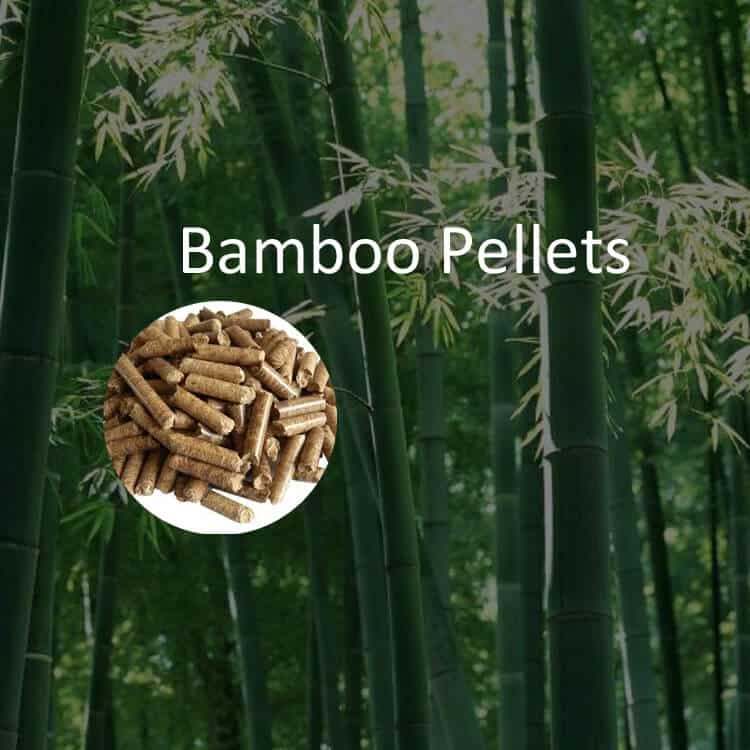
Bamboo Pellets: The Step-by-Step Making Process
The bamboo pellets have gained enough attention over the past few years. People consider it an eco-friendly replacement for coal.
Bamboo wood pellets are a renewable energy source having low emissions and high heat value. Additionally, these pellets emit relatively little ash.
A bamboo pellet study reveals that in comparison to other biomass products like woodchips and briquettes, bamboo pellets have better properties. It could be one main reason the market for bamboo pellets has grown significantly in the United States, Europe, and Asia.
According to a prediction, the global bamboo market can reach up to USD 110.5 million by 2025 with a compound annual growth rate of 4.2%.
It demonstrates the growing demand for bamboo pellets all over the world. It would not be wrong to mention that bamboo pellet production can be a lucrative business in the current scenario.
This post discusses the complete bamboo pellet production process step-by-step. Let us learn what exactly bamboo pellets are and their advantages before we proceed further.
What is Bamboo Pellet?
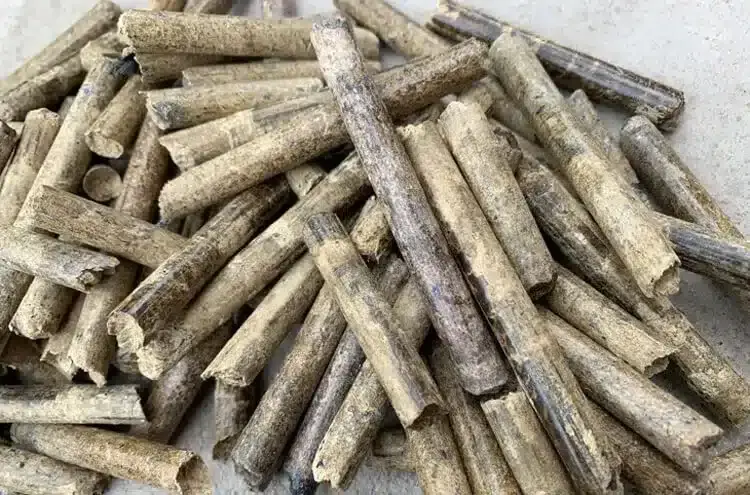
A bamboo pellet is a biomass pellet made of bamboo stalks, leaves, or powder. If you are using leaves and stalks, you will need to grind them to make powder.
Thereafter, you put this powder in your bamboo pellet machine and make pellets out of it.
Bamboo pellets resemble large capsules. They have a glossy appearance and a soft texture.
Bamboo grass can grow up to 60 feet in height. As bamboo is the fastest-growing plant on the planet, you will not run out of raw materials. Furthermore, farmers harvest it almost throughout the year.
Some primary bamboo pellet uses are as per below.
Bamboo Pellet Uses
Building Heating
Bamboo pellets are an ideal alternative to electric heaters and boilers that use natural gas. You can burn these pellets in furnaces and stoves to keep your homes and offices warm in winter.
Cooking
You can use bamboo pellets as fuel for residential and commercial cooking. They are suitable for grilling, barbecuing, and even baking.
If you have a biomass cooking stove, bamboo pellets will burn efficiently. Bamboo pellets are a clean cooking energy solution.
Industrial Boiler
People have also been using bamboo pellets in industrial boilers as an alternative to fossil fuel and coal. In large-size industrial boilers, they minimize energy costs to a great extent.
Power Plants
Bamboo wood pellets are used in power plants to address insufficient power supply.
Animal Bedding
Since bamboo pellets use bamboo leaves and stalks that are soft. As a result, they make excellent animal bedding offering raising experience.
Animal Feed
If you have not used anything except bamboo leaves and stalks, you can use pellets as animal feed.
As bamboo stalks are slightly sweet and crispy, animals love eating them. Furthermore, bamboo pellets are nutritious.
Bamboo Pellets Advantages
High Heat Value
The heat value of bamboo pellets is what makes them a viable option for household heating and cooking.
They have a heat value of 4800 kcal. that is comparable to coal. However, the benefit of bamboo pellets is that they take up less space.
In addition to having a high BTU (British thermal unit) content, bamboo pellets emit relatively little ash. Bamboo pellets contain about 1.1% of ash.
Cost Effective
When you use bamboo pellets for home heating, you save up to 50% on your bill. Bamboo pellets are cost-effective compared to gas, oil, and electric home eaters.
Low Emission
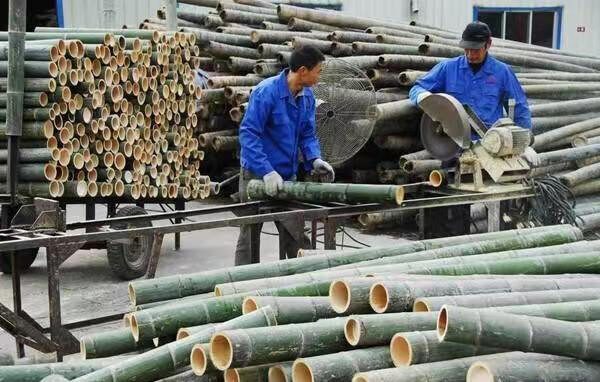
Bamboo pellets fuel has low carbon emissions. It produces little amounts of ash sulfur content.
Bamboo pellets do not emit air-polluting gasses into the atmosphere as other heating methods do. Consequently, they minimize the greenhouse effect.
Renewable
Bamboo pellets are a renewable energy source. As bamboo trees are grown continuously, they are in abundance.
Bamboo pellets do not take years to create like coal and other fossil fuels. As a result, they have the potential to fill up the shortage of traditional energy sources.
Control Over Cost
Governments do not control the cost of pellets directly. On the other hand, the administration regulates the price of natural resources like coal, gas, and oil.
High Profits
Since bamboo pellets are in demand, you can make a huge profit out of this business. It is an excellent biomass energy source that is easy on the pocket.
Therefore, people have been using them for building heating, cooking, and industrial steam furnaces. If you take the right approach, it can be a profitable business.
Is it Practical to Make Fuel Pellets out of Bamboo?
The supply of fossil fuels is finite and has been steadily running out. Therefore, everyone is looking for an alternative.
Today, bamboo pellets are a good source of renewable energy. However, some people still question whether bamboo can be good fuel pellets.
If you see the composition of bamboo, you will find that it has properties similar to wood. Despite belonging to the grass family, bamboo can process into pellets like wood material.
Bamboo contains 37% cellulose, 22% hemicelluloses, 24% lignin, and 1.5% ash.
How to Make Bamboo Pellets?
The bamboo pellet production process may vary based on whether you make them for residential or commercial usage.
Nevertheless, the fundamentals are the same. Let us learn the complete bamboo pellet-making process stepwise.
Complete Pelletizing Process of Bamboo Pellets
Collect the Raw Material
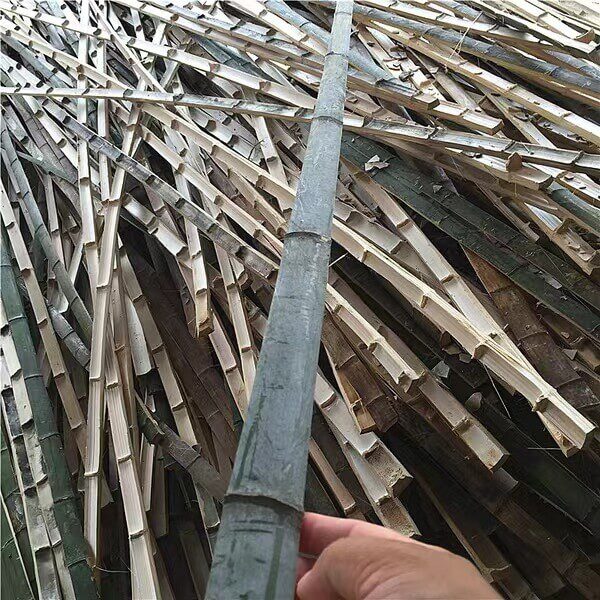
You can use bamboo leaves, bark, and trunks as raw materials. Bamboo grass grows comparatively fast. It is used for making musical instruments, household utensils, and construction materials.
People cultivate bamboo in abundance across Africa, Asia, and the United States. Therefore, it would not be difficult for you to gather raw materials for bamboo pellets.
You can contact your local farmers or timber stores for a continuous supply of raw materials.
Crushing
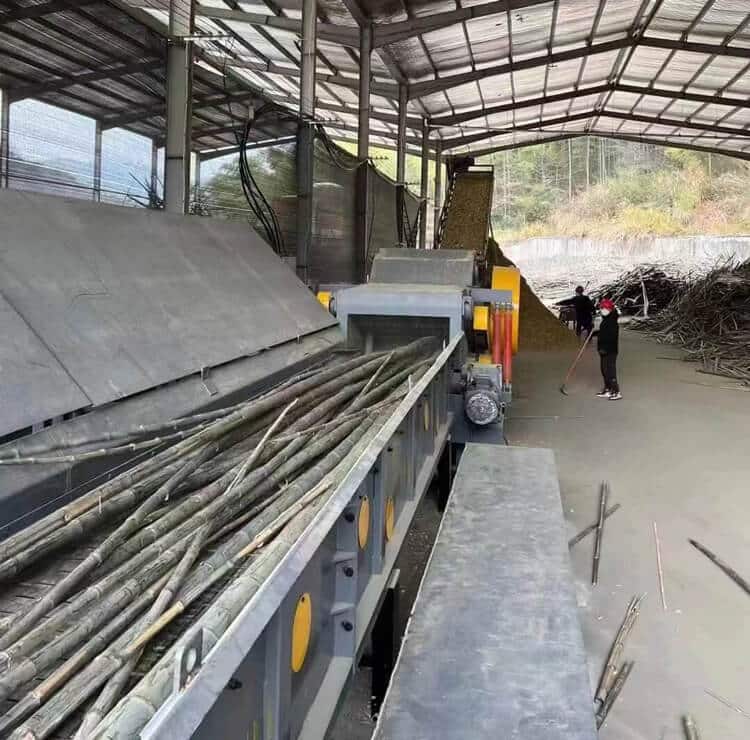
Eliminate all types of contaminations from bamboo leaves and stalks. Thereafter, crush raw material to make powder.
Use a magnet to find the metal in the raw material if you have any doubts.
You can use a hammer mill for crushing bamboo raw material. The mill will squash raw material and make it fine.
Remember, the raw material should not be excessively fine or thick.
Drying
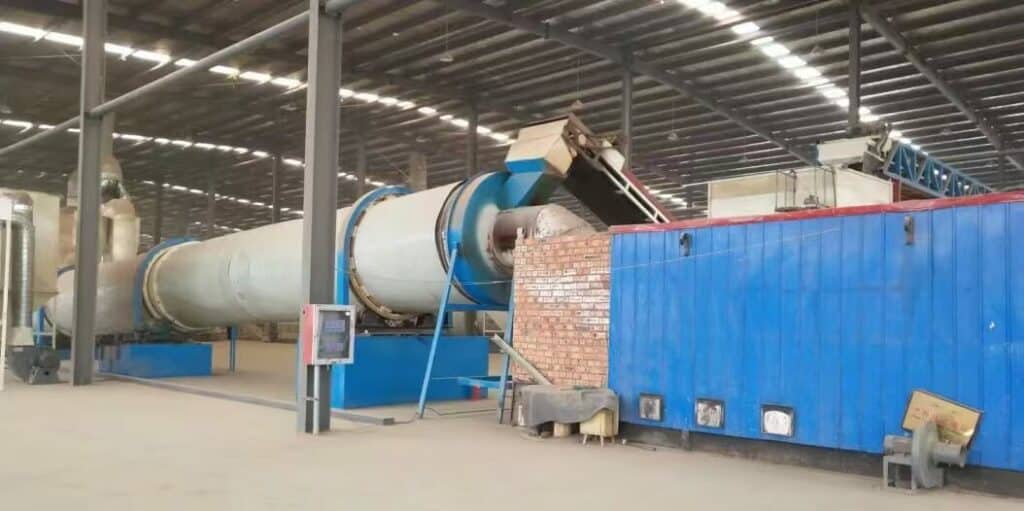
The raw material for bamboo pellets requires a certain amount of moisture to take a good shape. About 13% moisture is optimal for the pelletization of bamboo powder. You can use a moisture analyzer to check the level of moisture.
If you find excessive moisture in the raw material, dry it using a dryer. You can use either the airflow dryer or the drum dryer. They will help you achieve an optimal level of moisture.
If you have raw material in small quantities, use an airflow dryer. It is affordable and compact.
And if you need a professional and automatic dryer, invest in a drum dryer. The drum dryer can dry raw material in large quantities without compromising on drying results.
Pelletizing
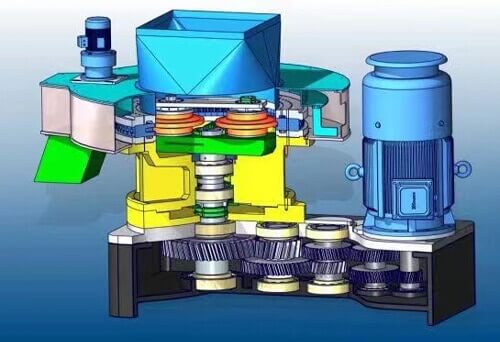
A bamboo pellet machine is a primary equipment involved in bamboo pellet fuel production.
Make sure you choose an appropriate bamboo pellet machine. If you want to produce pellets in large quantities for commercial purposes, go for a professional pellet mill. Your pellet machine must have a solid body and a high-quality die and roller.
You can consider our bamboo pellet machine. It gives you the advantages of a flat and horizontal ring die pellet machine.
Put your raw material in your pellet mill. It will apply pressure on bamboo powder to help it get through the die holes and take a uniform shape.
It is advisable to make a couple of bamboo pellets first. Ensure they have the appearance, texture, and size you are looking for.
Appearance is a crucial aspect if you want to sell pellets commercially. Make sure they have a uniform size between 6 to 12mm. Also, there should be no cracks over them.
If you notice cracks in the texture, it could be a reason for the low water in the bamboo pellet raw material.
Cooling
When pellets come out of your bamboo pellet machine after pelletizing, they are still hot. If you do not let them cool, they might stick together. You can utilize a counterflow cooler to cool your pellets effectively.
If you have made bamboo wood pellets in small batches, you can let them cool in the open air.
Do not pack them until they are completely cool. Otherwise, they might crack or lose shape and size.
Packaging
Some new businesses overlook it, but the packaging is crucial for the health of your bamboo pellets. You can pack them in plastic wraps or bags.
Use plastic wrapping if your pellets need to travel a long way. It will prevent moisture.
For pellet packaging, you can purchase a packing machine.
Storage
People who produce bamboo pellets in large quantities need a storage facility.
Choose a moisture-free area for their storage. Do not worry, you can store bamboo pellets with ease because they are lightweight.
Conclusion
Every country’s authorities and governments are working hard to reduce their reliance on fossil fuels. After all, they are primary contributors to global warming. Moreover, their amount has been reducing day by day.
The bamboo pellet is a green energy source that could be a good replacement for the existing energy source.
Bamboo pellets become sustainable biomass fuel. Therefore, it has been used in residential, commercial, and industrial sectors.
Overall, we can conclude that there is a substantial possibility for success in the production of bamboo biomass pellets.
Talk to An Expert
SHARE THIS POST
Talk to An Expert
